A Stark Beauty
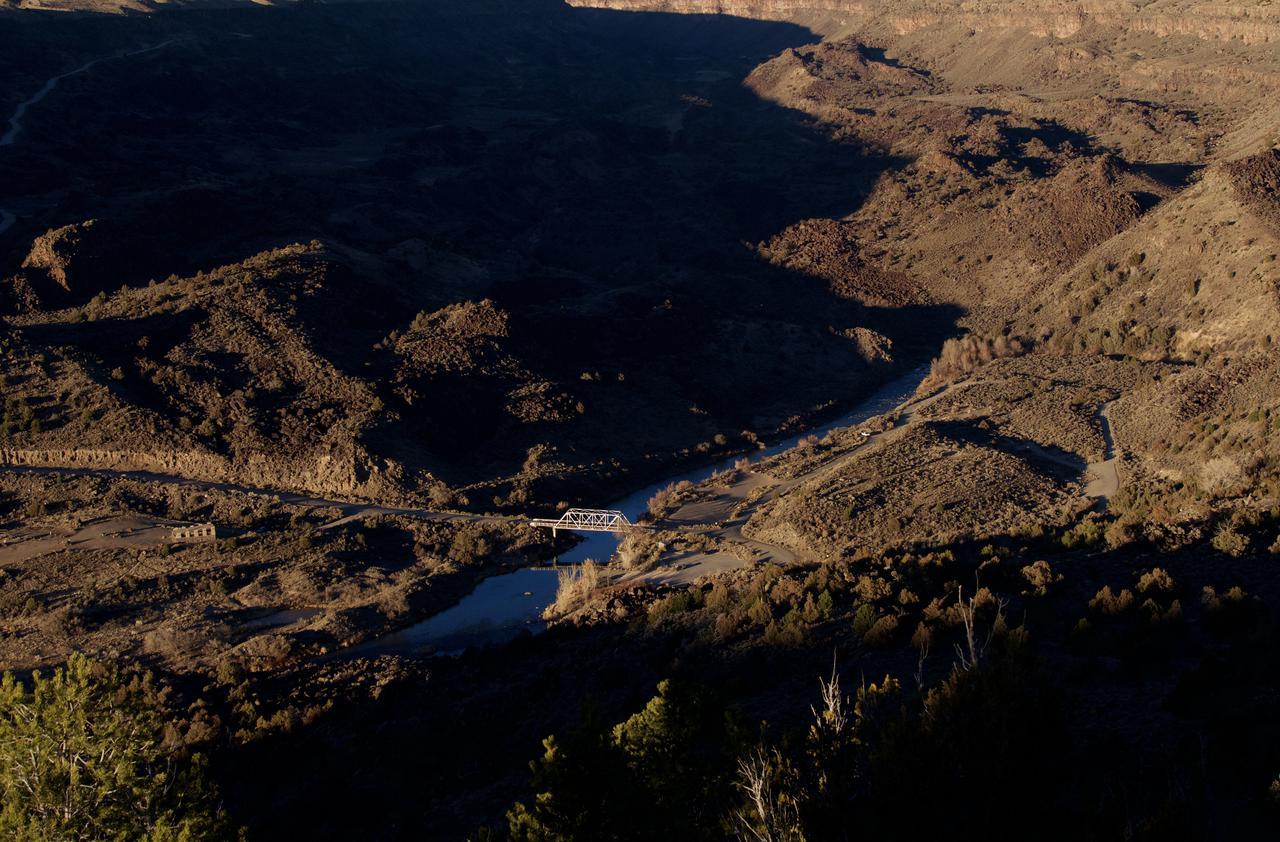
— Neil Armstrong
When I first looked down on the Taos Junction bridge from the top of the Picuris trail, I thought of Neil Armstrong's description of the lunar landscape. Little did I know that Apollo astronauts had trained just a few feet away.
It had been an awful autumn, so full of sadness that mornings in the outdoors, a reliable cure for melancholy, had lost their appeal.
Still, I needed a change of scenery. After squandering half of an early December day at home, I left for the Orilla Verde Recreation Area.
I chose the gorge because it was time for the bighorn rut. I had some small hopes of seeing rams butting heads. Whatever the odds of that, the steep sides of the gorge guaranteed exercise.
A few years ago a local author had invited me to call if I ever wanted to go watch rams bash each other in the head. By now I should have worked up the courage to phone him. He would have known where to look, and even if the sheep had been scarce I could have heard more of his adventures in the northern New Mexico wilderness. Instead, in what had become an annual tradition, I put off calling.
As it happened almost all of the wild things were elsewhere. One small flock of Canada geese loitered on a sand bar. A couple of ducks launched and disappeared downstream. The driver of a pickup truck stood quietly watching the water, but he didn't look that wild. The place was empty.
There was still plenty to see. Whether you like stories from deep time or from the little bits of it that make up human history, Orilla Verde has many to tell.
The Bridge at Taos Junction
Before the high bridge over the Rio Grande along U.S. 64, there were two low bridges: The John Dunn bridge northwest of Taos near Arroyo Hondo, and the Taos Junction bridge to the southwest, here, near Pilar.
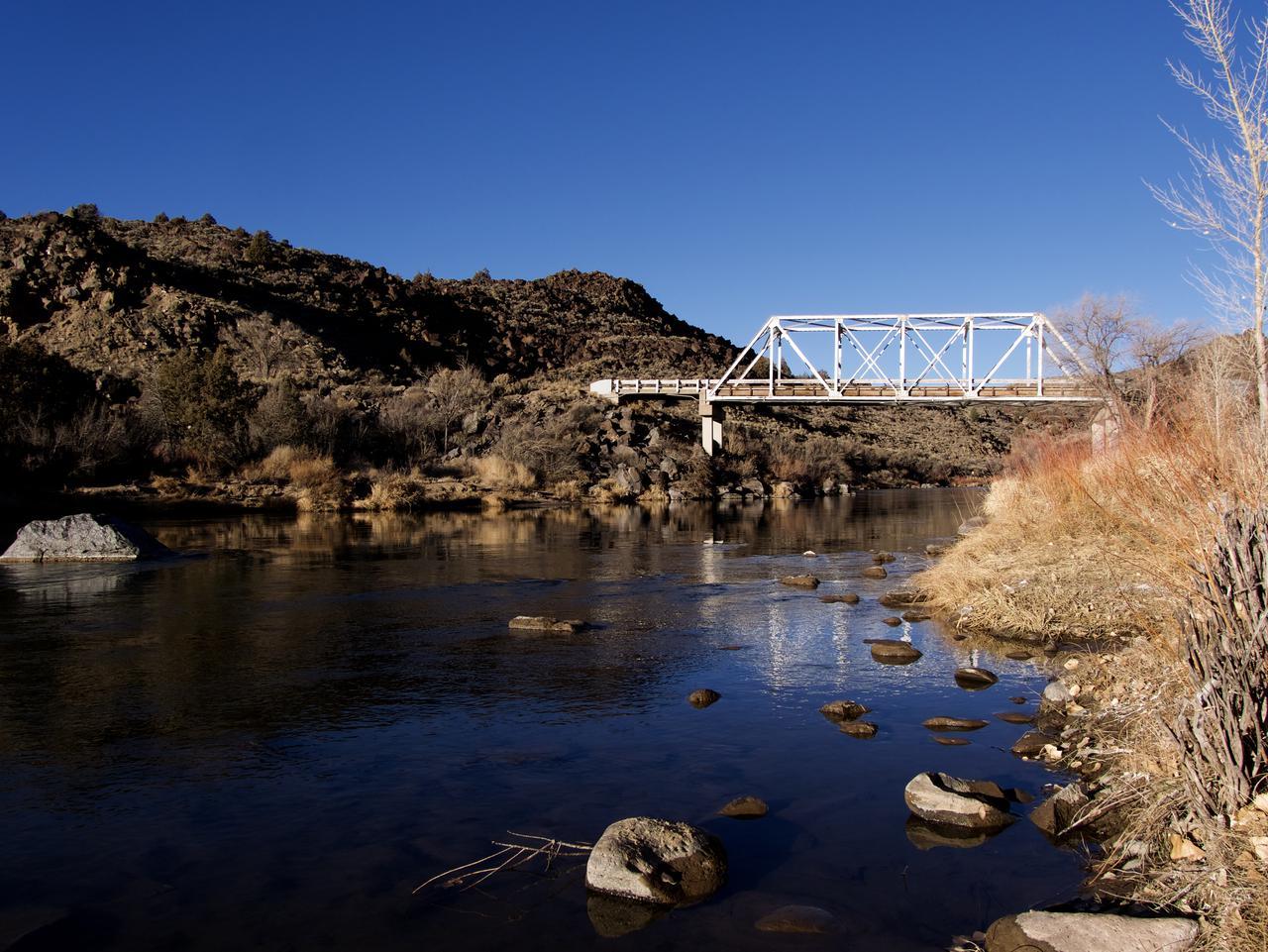
The Taos Junction bridge
Before these there were two other low bridges, in almost the same places: one here at Taos Junction and the other at Manby Springs, just downstream from Arroyo Hondo.
In the 1890s a character named John Dunn bought both of the older bridges, hoping to earn a living from their tolls. Soon after, both were destroyed by floods.
Dunn rebuilt the toll bridge at Arroyo Hondo in 1908. He ran a transport service that crossed the bridge, and he built a hotel nearby. Supposedly he scheduled the stage so that travelers would arrive near dark, and thus be inclined to pay for a night's stay.
Today's Taos Junction bridge was built in 1930. I assume it was the direct successor to the one that washed away.
Ways to Go
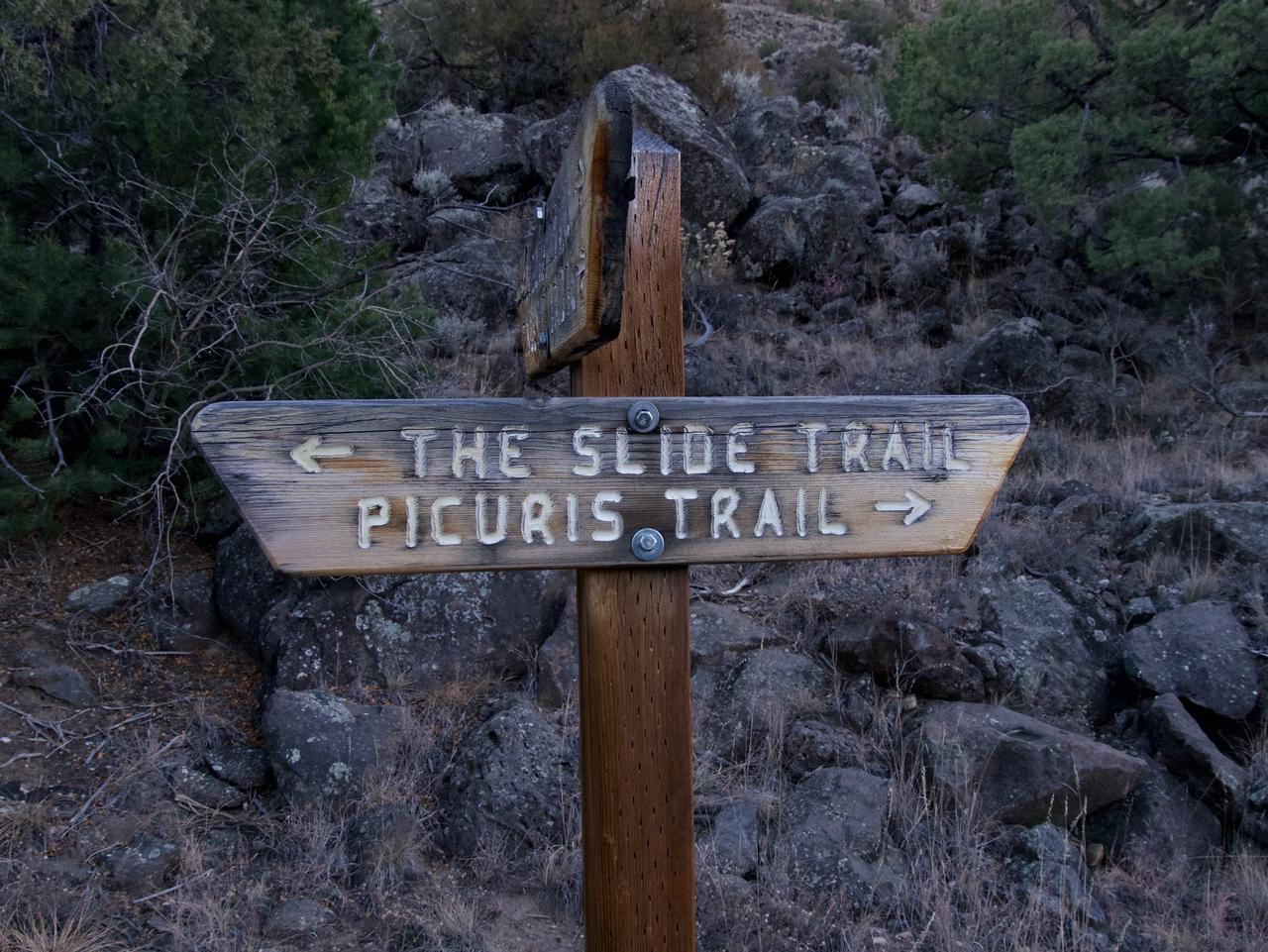
The Slide is long and gentle, Picuris short and steep
The parking area by the bridge lies just across the road from two trailheads.
Before it was a trail "The Slide" was a road leading up and east from the river. A massive rock slide put an end to that about 25 years ago. From the look of the slopes leading down to the Rio Pueblo, the slide also ended the road's use as a garbage dump.
The Picuris Trail, a short route that climbs about 700 ft to the rim of the gorge, was only ever made for human traffic. Since I'd never followed it, this was the trail I chose.
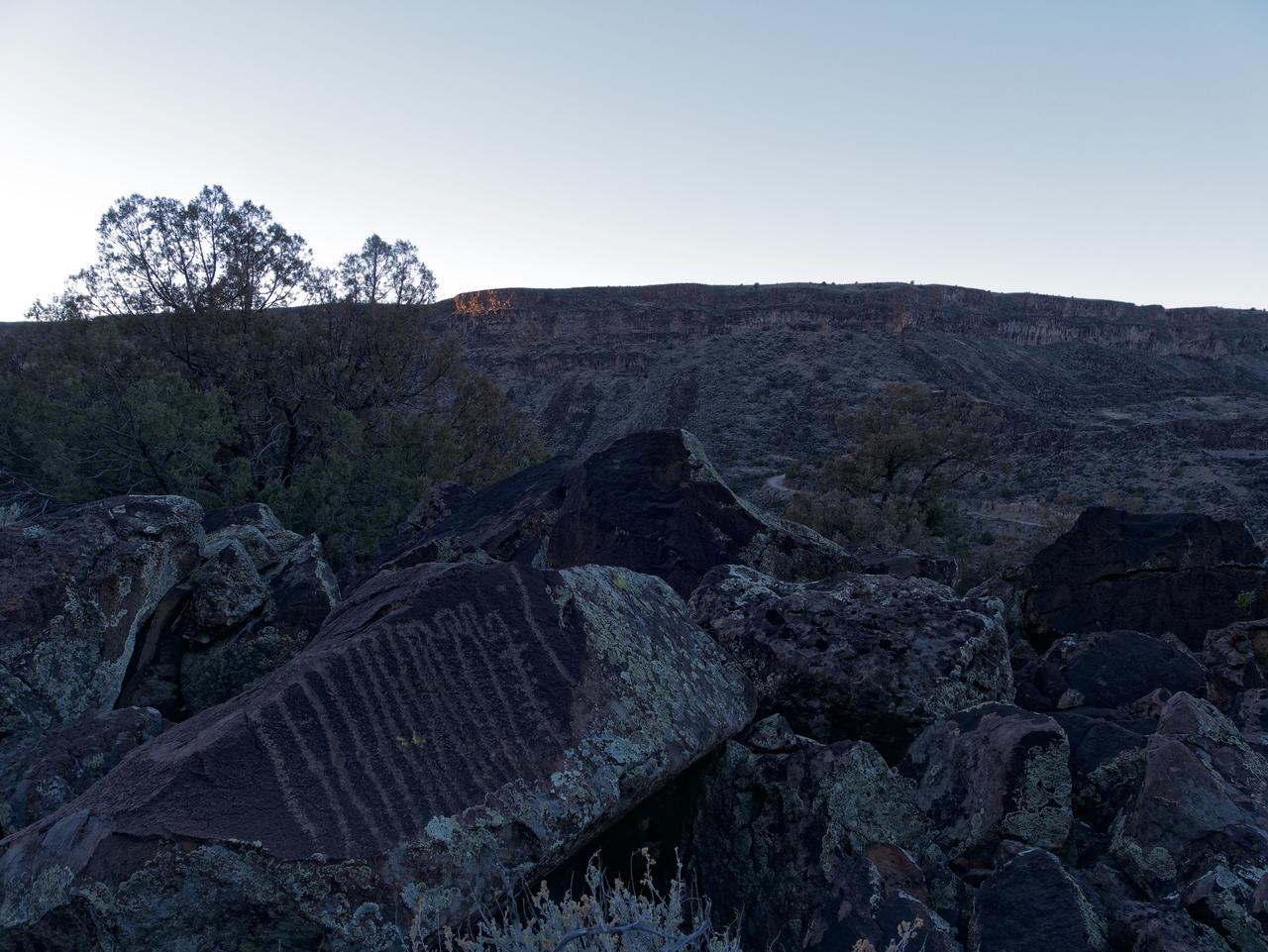
Native Americans made trail maps?
Humans have approached the river via the Picuris trail area for a long time. I believe Norteño sheep ranchers brought their flocks to water here. Ages earlier Native Americans frequented the area, as evidenced by petroglyphs along the trail.
I have no idea what these particular markings mean. When I saw them I thought of switchbacks.
Apollo 15
Neil Armstrong may have made the most famous comparison between the lunar landscape and the high desert, but he wasn't the only NASA employee to see similarities. Just over a month after I took in the view from the gorge rim, I learned that I'd been standing right next to an Apollo 15 training site; and that this section of the Rio Grande gorge had been selected, in part, because it was about the same width as the Hadley Rille site where Apollo 15 was to land.
The Apollo 15 Map and Image Library hosts several photos of the training activities around the gorge. Space.com recounts the details of the Apollo 15 lunar excursion.
NMT
The New Mexico Bureau of Geology and Mineral Resources, a division of New Mexico Tech, has published several books about the geology of the state. They are beautiful works, informative (of course) and containing sometimes stunning photographs by artists like Chris Dahl-Bredine.
I discovered the Apollo connection while flipping through "The Rio Grande" by Paul W. Bauer. Yes, I bought a copy.
Back to Bighorn
As recently as 2005 there were no bighorn sheep in the gorge. Now about 300 live there.
Bighorn in northern New Mexico were wiped out by the beginning of the 20th century. I've read that a lot of them were killed by diseases carried by domestic sheep.
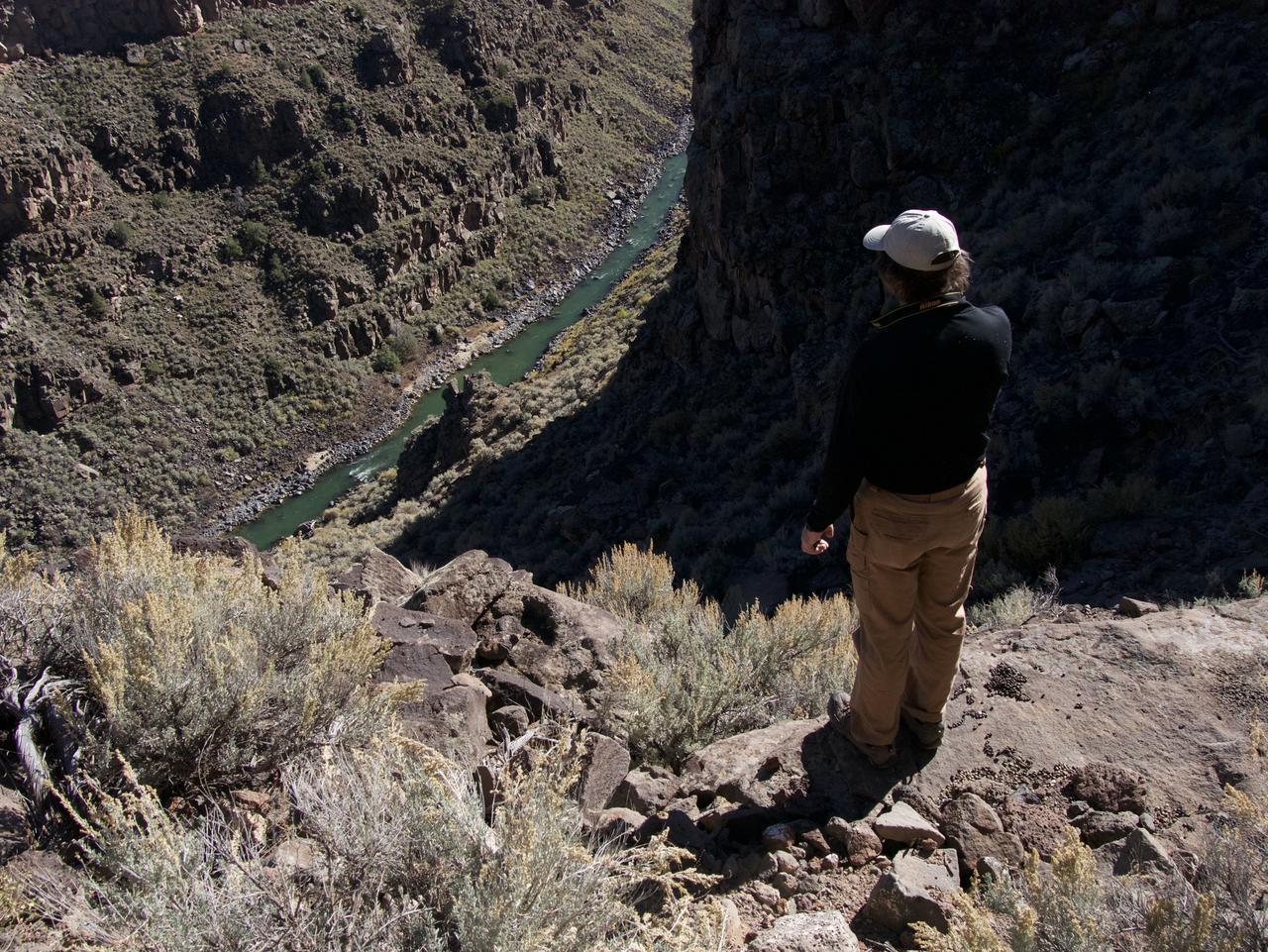
Following a bighorn trail into the gorge, south of the U.S. 64 bridge
In the 1940s a group of bighorn from Alberta, Canada, was introduced to the Sandias near Albuquerque. Within a few years another herd, consisting of sheep from both Alberta and the Sandias, was introduced into the Pecos Wilderness. In 2005-2007 they were reintroduced to the gorge, thanks in part to the Taos Pueblo war chief, lead biologist and director of wildlife.
Some of the first of these sheep were fitted with radio collars. I saw one in 2012, five years after the reintroduction. I remember being disappointed by the collar, as if it somehow made its wearer less wild.
I wonder about the trails that today's bighorn follow to the river. Might some of those bajadas have been used by domesticated usurpers? Before the ranchers came, might those same descents have been used by the original bighorn?
Associations
I've visited Orilla Verde in winter before. This time, at first, I was disappointed that the wild things weren't there. The turkey vultures, bighorn and ducks were all missing. Seasonal visitors like bald eagles hadn't appeared.
But I still came away with something interesting. Instead of wildlife, I got a sense of some of the human stories of this place. And I found a surprising connection between its stark beauty and that of another world.